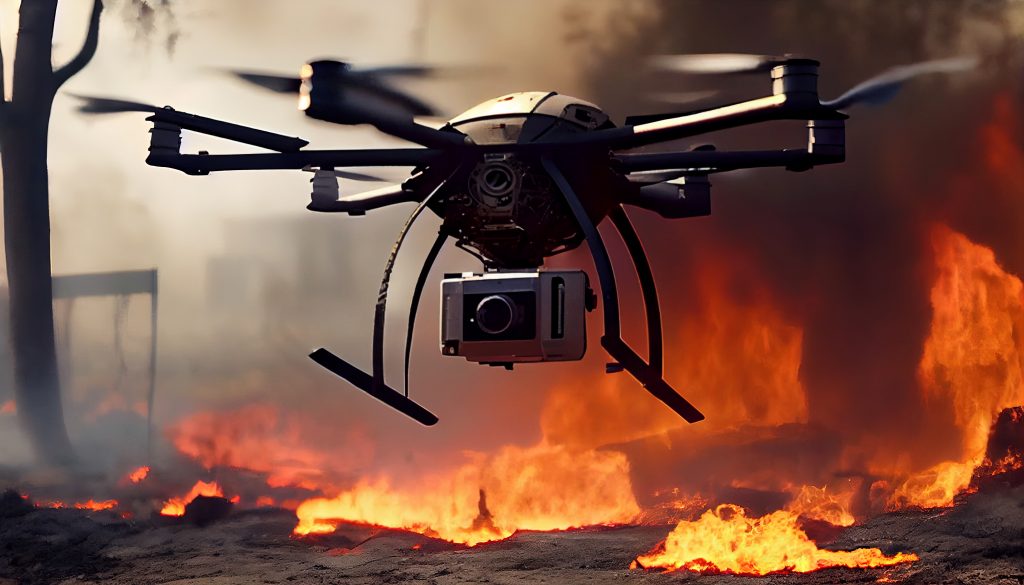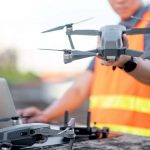Scientists, conservationists, and park rangers are increasingly turning to drones to tackle a diverse range of issues plaguing the ecosystem. Drones provide more accurate data and monitoring than otherwise possible with traditional methods. In the future, drones for wildlife maintenance might blend into groups of animals, undetected, for additional research. Drones are also an important tool for agencies fighting illegal fishing and overfishing.
Amphibious drones, which are capable of both flight and underwater applications are something to keep an eye on. Amphibious drones mimic designs found in nature to provide strategic advantages for research. For example, some drones are able to attach to various transport vehicles, like Remora to sharks, to cover more ground. Drones like this might be useful for inspecting oil rigs. Hopefully research will continue to progress, attaching the drones to whales is a goal for further studies.
Researchers at the New Mexico Institute of Mining and Technology are using taxidermy skills to help blend drones into the environment. The hope is that using these drones will allow test subjects, mostly birds, to behave naturally while under observation. Stealth drones, such as these, could help researchers discover more about bird habits and social order. Currently smaller bird prototypes are able to fly for 20 minute intervals, testing hopes to proceed to drones that resemble larger birds of prey. Bio inspired drones are proving to be an emerging theme that is currently attracting a lot of attention.
In Nambia, drones are supercharging the ability to surveil wildlife populations in the Kuzikus Wildlife Reserve. AI integration is allowing drones to provide real-time information for scientists. One of the beneficial aspects of this research, is that it can proceed without disturbing animal populations. Scientists are better informed to make decisions because the data provided is more accurate.
Drones are being used to tag whales and other large marine animals, initial feedback is positive. Reports state that the method is less intrusive than using boats, while also being more efficient. Fast moving animals have always provided a challenge and pose significant danger for humans. Drones might be critical to these marine studies in the future.
Drones are useful for monitoring changes to the landscape, whether surveying the damage after disaster strikes, trying to figure out ways to mitigate damage beforehand, or providing warnings to people in peril. UAVs are often found near disaster scenes, providing workers with a clear picture of the damage. Drones are useful in volcano research and other environments where people would be at risk, providing information which could not be gathered otherwise.
Saildrones are autonomous boats that transverse various bodies of water conducting research. Scientists in the Great Lakes believe these marine drones deliver more accurate fish counts than other boats. Loud motors could be scaring off fish and distorting counts. Hopefully, this more accurate data will help provide agencies the ability to strike a better balance between having a robust economy and ensuring sustainability for future generations.
Recently, one of the Saildrones that is traversing the Pacific discovered the remains of an underwater volcano right off the coast of Northern California. Discoveries like this one which was thought to be something else to researchers will continue to bolster the value proposition that autonomous drones offer to researchers. Want to learn more about underwater drones?
Amateur wildlife drones are capturing amazing images all across the globe. Debate rages on about how to police the increased drone activity, some of which is problematic. Operators are sometimes flying their drones in irresponsible fashion, resulting in harassment of the wildlife. Be aware of the rules and fly your drone safely to avoid trouble.
In conclusion, the use of drones for research will proliferate because of all the useful discoveries we have already unearthed. Drones are better suited for getting information that is critical for researchers that need accurate data to monitor wildlife. The real-time data provides scientists with a wealth of information that will lead to better decisions about maintenance. Drones are able to do the work with a smaller footprint and often do not disturb nature as much as the alternative. The benefits are hard to ignore.





